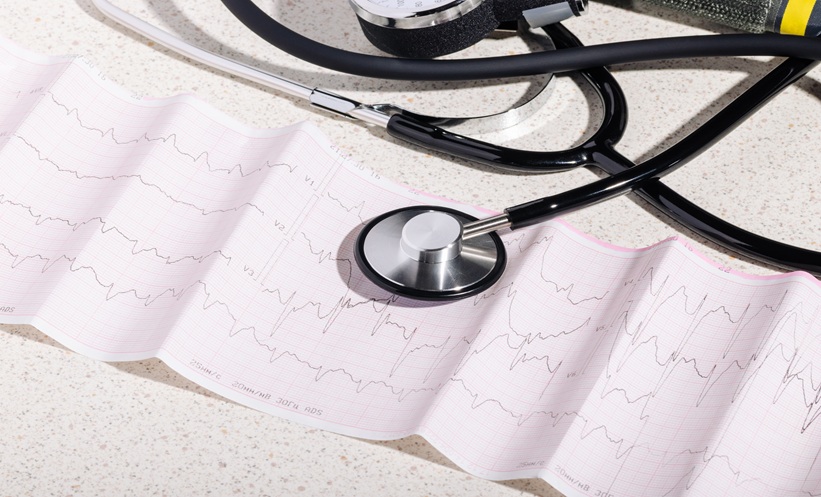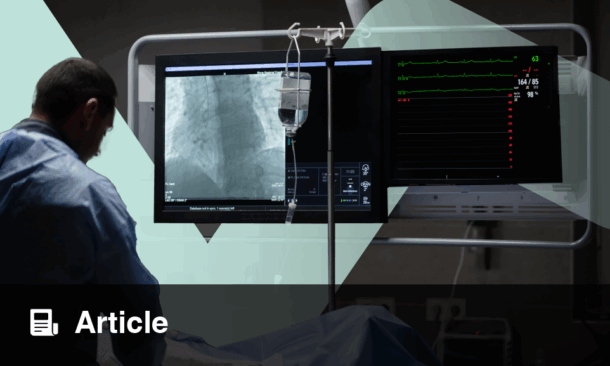Author: Abigail Craig, EMJ
Citation: EMJ Int Cardiol. 2023; DOI/10.33590/emjintcardiol/10305569. https://doi.org/10.33590/emjintcardiol/10305569.
![]()
EMBOLIC PROTECTION
Alexandre Abizaid, Hospital do Coração, Brazil, discussed a new alternative for embolic protection during TAVI, called Emboliner® (Emboline, Santa Cruz, California, USA), an embolic protection catheter designed to protect all three cerebral vessels by capturing debris in the descending aorta. According to Abizaid, this is a self-expanding, conformable, cylindrical filter (150 μm pore size) that lines the aorta, which can treat ascending aortic diameters up to 49 mm. Balloon aortic valvuloplasty and post-dilation can be performed through the sheath, making this a highly practical system. A series of three single-arm studies, with 63 patients undergoing TAVI, has shown no deaths, no cases of acute kidney injury, and three strokes, which are still to be adjudicated. With a prospective, randomised, multicentre trial of 500 patients set to begin soon, further context will be added to the value of Emboliner.
Antonio Sorropago, University of Milan, Italy, next presented FLOWer (AorticLab, Turin, Italy), a complete embolic protection device aimed at reducing the incidence of stroke following TAVI. Once positioned in the aortic arch, 1 cm upstream of the first brachiocephalic trunk, it is unsheathed opposed to the aortic wall. FLOWer is suitable for 95% of aortic geometries due to the availability of three different sizes, and the pore diameter of 60 μm catches even the smallest emboli following TAVI. Sorropago hopes to see FLOWer in the European market by the end of 2023, following the success of clinical trials. NAUTILUS, a single arm, prospective, non-randomised clinical study enrolled 75 patients with severe native aortic valve stenosis. Results indicate that FLOWer is easy to deploy, ensuring time is not added to the procedure, but most importantly, the rate of major adverse cardiac and cerebrovascular events is promising, compared to literature data. Finally, each device has been shown to capture an average of 420 particles, demonstrating its promise in reducing the incidence of stroke following TAVI.
CLOT REMOVAL
Changing gears slightly, the next presentation, delivered by Constantino Del Giudice, Institut Mutualiste Montsouris, Paris, France, outlined a pulsing aspiration pump, specifically for endovascular clot aspiration. Clot aspiration is quickly becoming a first line therapy in removing endovascular clots, providing rapid and effective treatment that decreases hospital stay time. However, aspiration catheters may clog, requiring repeated aspiration. This results in the removal of large volumes of blood, which may decrease the patient’s haemoglobin level. Subsequently, more efficient, one pass aspiration pumps are needed. Intermittent clot aspiration may allow a dynamic stretching of the clot, allowing it to adapt to the diameter of the inner catheter, reducing frictional forces and blood loss. Del Giudice introduced Quiver, a small handheld disposable pump that uses a step-up pulsing force. Demonstrating a maximum suction of 28.5 inHg, a low aspiration flow of 280 mL/min blood, and most importantly an aspirated clot volume of 110 mL, the research team are encouraged by initial testing. Thus, pulsing aspiration may improve one pass aspiration, demonstrating improved clot removal on the bench. However, further lab and clinical studies are needed to investigate the clinical value.
HEART FAILURE
Leor Perl, Rabin Medical Centre, Petah Tikva, Israel, next discussed physician-directed patient self-management of heart failure, specifically using left atrial pressure (LAP). Patients with heart failure are at an increased risk of hospital admissions, but invasive haemodynamic monitoring of pulmonary artery pressure has been shown to minimise this risk. However, remote pulmonary artery pressure sensing does not accurately estimate left-sided filling pressures in many patients with heart failure. Perl introduced a novel, battery-less, wireless, fully digital pressure monitoring system, the V-Lap™ (Vectorious Medical Technologies, Tel Aviv, Israel), which is implanted in a trans-septal fashion in the left atrium. The results of the first in-human study showed 100% successful V-Lap implantation and 97% freedom from major adverse cardiac events at 3 months. However, the initial monitoring system depended on the information being delivered to physicians who must process the data before acting on it, thus increasing the workload of healthcare professionals and isolating patients from the data. To combat this, following the implant of V-Lap, data analysis derives critical points of information, which are sent to both physicians and patients, ensuring the patients are empowered to make changes. Preliminary outcomes in 13 patients show they experienced persistent or very high average LAP only 10.9% of the time, and there have been no cases of heart failure related hospital admissions. Overall, results are very promising, but due to the preliminary nature of the study, results cannot be considered clinically significant.
ARTIFICIAL INTELLIGENCE
Looking to the future, Naila Loudini, University Medical Centre Groningen, the Netherlands, presented an intelligent conversational TAVI agent. TAVI is the gold-standard treatment for severe aortic stenosis; however, indications are evolving to include intermediate risk patients and possibly low risk patients in the future. This has a major impact on healthcare resource planning, especially since follow-up after TAVI is necessary but challenging. The intelligent TAVI conversational agent collects richer data from the patient, encourages therapy compliance, and is able to ask about alarming symptoms using artificial intelligence. Data are then securely transferred to the medical team. In an upcoming study comparing the intelligent agent to standard care, adherence rate is expected to be increased, with these patients expected to have better clinical outcomes. Risk factors of poor clinical outcomes and poor adherence will also be identified. Real-time patient-reported data will be invaluable in advising the treatment both of current and future patients.
AORTIC VALVE SCORING
The final session presented by Ganesh Manoharan, Royal Victoria Hospital, Folkestone, UK, discussed whether scoring the calcified aortic valve can defer the need for a permanent implant. Manoharan presented Leaflex™ (Pi-Cardia, Tel Aviv, Israel), a device designed to score the calcific part of aortic valves on the aortic side. By delivering scoring to specific areas of the three leaflets you can significantly change the patient’s pressure measurement gradient from severe or moderate to mild. Following two small scale trials demonstrating that the mechanism of action increases leaflet mobility with no damage to the valve, participants are currently being enrolled in a study evaluating the safety and acute performance in patients undergoing Leaflex as a standalone treatment. Provisional results from 20 patients suggest it provides significant haemodynamic improvement with no damage to the valve and an embolic risk comparable to TAVI. The research team hope that it will replace TAVI in elderly patients and replace typical first steps in the treatment of 60–75-year-olds.
CLOSING REMARKS
In summary, each presentation provided details of thought-provoking, exciting technological advance within the field of interventional cardiology. With several trials ongoing, each has the potential to revolutionise the clinical management of patients, streamlining the current treatment of aortic valve diseases, heart failure, aortic stenosis, and aortic valve calcification.








